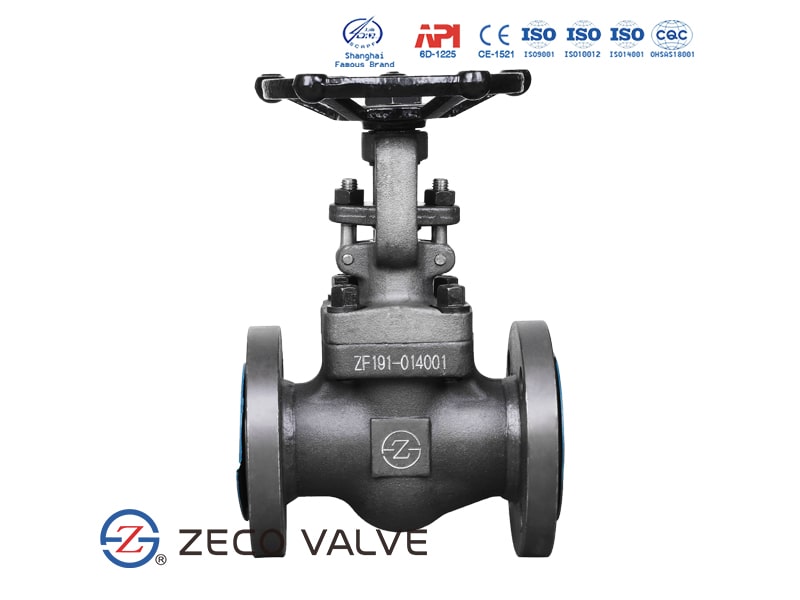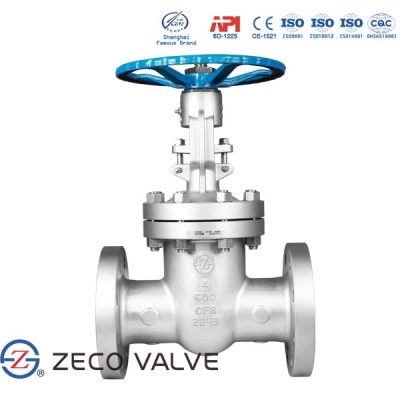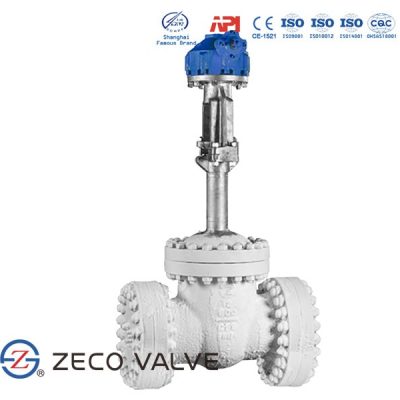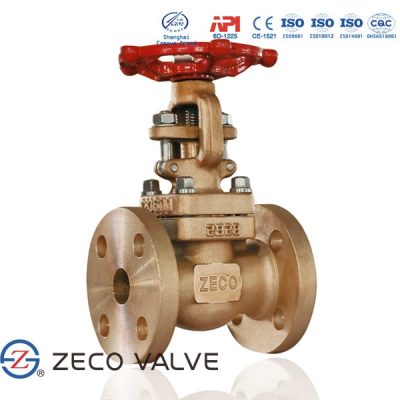A105 Gate Valve
Description
A105 Gate Valve is normally OS&Y Gate Valve.
OS&Y means “outside stem and yoke” or “outside screw and yoke”. OS&Y gate valves operate by opening and closing via a gate, which lowers into or rises out of the valve. Raising the gate allows water to flow through the valve while lowering the gate cuts off the water flowing through the valve.
How does an A105 Gate Valve Work?
A105 Gate valves are designed for fully open or fully closed service. They are installed in pipelines as isolating valves, and should not be used as a control or regulating valves. Operation of a gate valve is performed either clockwise to close (CTC) or clockwise to open (CTO) rotating motion of the stem. When operating the valve stem, the gate moves up or downwards on the threaded part of the stem.
Gate valves are often used when minimum pressure loss and a free bore is needed. When fully open, a typical gate valve has no obstruction in the flow path resulting in a very low-pressure loss, and this design makes it possible to use a pipe-cleaning pig. A gate valve is a multiturn valve meaning that the operation of the valve is done by means of a threaded stem. As the valve has to turn multiple times to go from the open to the closed position, the slow operation also prevents water hammer effects.
A105 gate valves are widely used for all types of applications and are suitable for both above-ground and underground installation.
Features of A105 Gate Valves
- 1. Stronger, leakproof bolted body bonnet joint ensures joint tightness with a higher bolting torque;
- 2. Wedge guiding minimizes seat rubbing and scuffing resulting in long cycle life;
- 3. Body made of superior strength forgings and optional cast steel;
- 4. Stem seal offers tight seal with little to no maintenance over long periods of time;
- 5. Optional live-loading of packing and leak off;
- 6. Non-rotating stem;
- 7. Hard-faced seating faces resist erosion;
- 8. Available with provision for seal weld.
Product Range of A105 Gate Valve
- Body material: A105
- Nominal diameter:1/2″~2.5″
- Pressure range: Class150~2500
- End connection: RF, RTJ, BW, NPT, SW
- Working temperature:-29℃~+560℃
- Mode of operation: Handwheel, Electric Actuator, Pneumatic Actuator, etc.
CV & Weight of A105 Gate Valve
| Size | Cv | Weight (lbs.) |
| 1/4 | 3 | 4.5 |
| 3/8 | 5 | 4.6 |
| 1/2 | 7 | 4.7 |
| 3/4 | 14 | 4.9 |
| 1 | 30 | 7.8 |
| 1-1/4 | 85 | 11.8 |
| 1-1/2 | 100 | 13.5 |
| 2 | 160 | 21.0 |
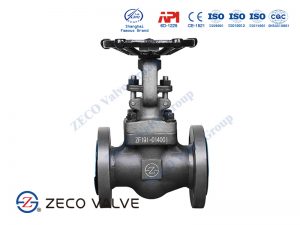
What is A105 Gate Valve?
ASTM A105 Valves are made up of a special chemical composition that can be used to make valves of ASME B16.34 and B16.10 face-to-face dimensions. The material has carbon, manganese, phosphorus, sulfur, silicon, copper, nickel, chromium, molybdenum, and vanadium in it. The ASTM A105 Gate Valves are forged material-made valves. They have excellent strength, wear and tear, and higher mechanical properties. There are different types of valves in this carbon steel material based on its structure and functions. The ASTM a105 carbon steel Swing Check Valves are structurally swinging valves. These use a swing to control the flow. The swing valves are also checked valves by functional type. They make sure that the fluid flows only in one direction.
What is ASTM A105 Material?
ASTM A105 is the standard specification covering forged carbon steel piping components for ambient- and higher-temperature service in pressure systems. It can be readily manufactured to flanges, fittings, valves, and other piping components in accordance with dimensional standards such as MSS, ASME, API, EN/BS, DIN, NOSOK specifications, etc. A105 forgings are limited to a maximum weight of 4540 kg [10000 lb]. As stated in our quality manual, welding repair of defects in ASTM A105 flanges or fittings is absolutely prohibited by Metals-Piping(although it is permissible by the standard).
Chemical Composition of ASTM A105
| Element | Composition, % |
| Carbon | 0.35 max |
| Manganese | 0.60-1.05 |
| Phosphorus | 0.035 max |
| Sulfur | 0.040 max |
| Silicon | 0.10-0.35 |
| Copper | 0.40 max (1) |
| Nickel | 0.40 max (1) |
| Chromium | 0.30 max (1-2) |
| Molybdenum | 0.12 max (1-2) |
| Vanadium | 0.08 max |
Note:
A : For each reduction of 0.01 % below the specified carbon maximum (0.35 %), an increase of 0.06 % in manganese above the specified maximum (1.05 %) will be permitted up to a maximum of 1.65 %. B: The sum of copper, nickel, chromium, molybdenum, and vanadium shall not exceed 1.00 %. C : The sum of chromium and molybdenum shall not exceed 0.32 %.
Mechanical Properties of ASTM A105
| Tensile | 70 ksi, min |
| Yield, note A | 36 ksi, min |
| Elongation in 2in, Basic minimum for wall 5/16″ and over, strip test | 30% |
| Hardness | 187 HBW max |
Note A – Determined by either the 0.2% offset method or the 0.5% extension-under-load method. Other test methods are available as listed in A105.
Heat Treatment of ASTM A105 Material
Heat treatment is not a mandatory requirement except for flanges above Class 300, flanges of special design where the design pressure or design temperature is not known, and for items over 4” NPS and above Class 300. When heat treatment is required, annealing, normalizing, normalize and tempering, normalizing and quench and tempering shall be the applied methods.
Forging
This alloy is forged at between 1,700 degrees Fahrenheit and 2,200 degrees Fahrenheit, followed by quenching and tempering.
Annealing
Forged parts are allowed to cool to below 1,000 degrees Fahrenheit before reheating to between 1,550 degrees Fahrenheit and 1,700 degrees Fahrenheit. Slow furnace cooling follows.
What is OS&Y Valve?
A105 Gate Valve is normally OS&Y Gate Valve.
OS&Y means “outside stem and yoke” or “outside screw and yoke”. OS&Y gate valves operate by opening and closing via a gate, which lowers into or rises out of the valve. Raising the gate allows water to flow through the valve while lowering the gate cuts off the water flowing through the valve.
How does an A105 Gate Valve Work?
A105 Gate valves are designed for fully open or fully closed service. They are installed in pipelines as isolating valves, and should not be used as a control or regulating valves. Operation of a gate valve is performed either clockwise to close (CTC) or clockwise to open (CTO) rotating motion of the stem. When operating the valve stem, the gate moves up or downwards on the threaded part of the stem.
Gate valves are often used when minimum pressure loss and a free bore is needed. When fully open, a typical gate valve has no obstruction in the flow path resulting in a very low-pressure loss, and this design makes it possible to use a pipe-cleaning pig. A gate valve is a multiturn valve meaning that the operation of the valve is done by means of a threaded stem. As the valve has to turn multiple times to go from the open to the closed position, the slow operation also prevents water hammer effects.
A105 gate valves are widely used for all types of applications and are suitable for both above-ground and underground installation.
Features of A105 Gate Valves
- 1. Stronger, leakproof bolted body bonnet joint ensures joint tightness with a higher bolting torque;
- 2. Wedge guiding minimizes seat rubbing and scuffing resulting in long cycle life;
- 3. Body made of superior strength forgings and optional cast steel;
- 4. Stem seal offers tight seal with little to no maintenance over long periods of time;
- 5. Optional live-loading of packing and leak off;
- 6. Non-rotating stem;
- 7. Hard-faced seating faces resist erosion;
- 8. Available with provision for seal weld.
Product Range of A105 Gate Valve
- Body material: A105
- Nominal diameter:1/2″~2.5″
- Pressure range: Class150~2500
- End connection: RF, RTJ, BW, NPT, SW
- Working temperature:-29℃~+560℃
- Mode of operation: Handwheel, Electric Actuator, Pneumatic Actuator, etc.
CV & Weight of A105 Gate Valve
| Size | Cv | Weight (lbs.) |
| 1/4 | 3 | 4.5 |
| 3/8 | 5 | 4.6 |
| 1/2 | 7 | 4.7 |
| 3/4 | 14 | 4.9 |
| 1 | 30 | 7.8 |
| 1-1/4 | 85 | 11.8 |
| 1-1/2 | 100 | 13.5 |
| 2 | 160 | 21.0 |

